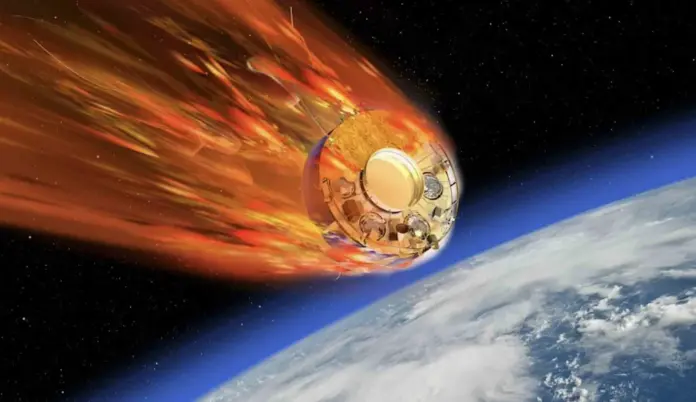The Soviet spacecraft Kosmos 482 is in the news again. It was launched in March 1972, and the space object has been circling Earth for more than half a century. Initially, it was part of a Venus mission. But the mission did not go very far after launch. It has remained trapped in low Earth orbit since then.
And now, the satellite is finally coming back. Experts says that Kosmos 482 will enter Earth’s atmosphere shortly. The estimated window ranges from 10 p.m. ET on Friday to 6:30 a.m. ET on Saturday. The European Space Agency (ESA) puts its best guess at 2:30 a.m. ET (06:37 UTC).
A Failed Mission That Never Left Orbit
Kosmos 482 was never intended to remain in Earth orbit. The spacecraft was designed to land gently on Venus. It was intended to research the planet’s dense atmosphere. But technical issues made it veer off course. Unlike certain satellites, it wasn’t designed for long-term orbital existence. Yet it has remained in space for more than 50 years.
It was a creation of the Soviet space program. The mission embodied our frantic space race in the Cold War. Although it was a failure, Kosmos 482 became a long-term satellite by our mistake.
Also read : Federal Lands Sale in the West: House Proposal Faces Environmental Backlash
Where Might It Crash?
The precise point of impact remains unknown. Specialists indicate that it may fall anywhere between 52° North and 52° South latitude. That encompasses portions of North and South America, Europe, Asia, Africa, and Australia. Briefly, much of the world is in the danger zone.
Due to this broad range, monitoring the last moments is difficult. Speed and angle of reentry of the spacecraft make prediction challenging. But most probably what will happen? It will be incinerated in the Earth’s atmosphere before any pieces hit the ground.
Is Kosmos 482 a Threat?
Most satellites incinerate during Earth reentry. But not Kosmos 482. Based on Vishnu Reddy, an expert on space at the University of Arizona, this spacecraft was designed to make it through Venus’s toxic environment. That atmosphere is 100 times denser than Earth’s. That means this is one rugged lander.
Due to its rugged design, some parts might survive reentry. However, experts say the risk to humans is very low. Reddy added that the most likely crash site would be the ocean. Earth is 70% water, after all. “You’d have to be incredibly unlucky to get hit,” he said.
Why Now, After 50 Years?
Space debris does not orbit indefinitely. Gravity and atmospheric friction drag things down over time. Even rugged spacecraft like Kosmos 482 will eventually lose altitude. In recent months, tracking stations observed its orbit declining rapidly.
Space agencies around the globe tracked it closely. That includes NASA, ESA, and amateur satellite spotters. All concur that it’s in its last days in space.
Lessons From Kosmos 482
Kosmos 482 is a reminder of a bygone space age. It’s a reminder of an era of ferocious scientific competition. Now, space flights are more international and planned out. But older satellites like this are genuine dangers as space junk. They speak to the requirement for improved space traffic management.
Current spacecraft are designed with end-of-life strategies. These are controlled reentry or transfer to “graveyard” orbits. Kosmos 482 did not have this feature. Its crash is a warning to future missions.
Also read : Navy Federal Credit Union Down: Report on Mobile App and Website Outages Made by Users
Looking Ahead
Residents in the possible crash zone do not have to worry. The likelihood of debris landing is low. Chances are, nothing will be noticed or felt. If any pieces endure, they will probably land in remote locations or oceans.
Nevertheless, this is an unusual occurrence. A 50-year-old Soviet spacecraft coming home is not a common occurrence. Scientists and space buffs alike will be paying close attention.
Kosmos 482’s journey is finally ending. From a failed Venus mission to an orbital ghost, its time in space is nearly over.








